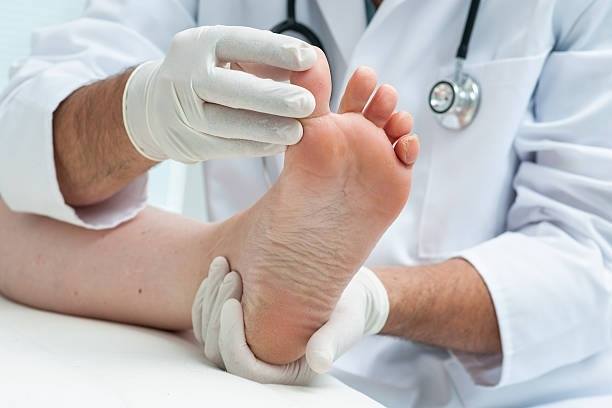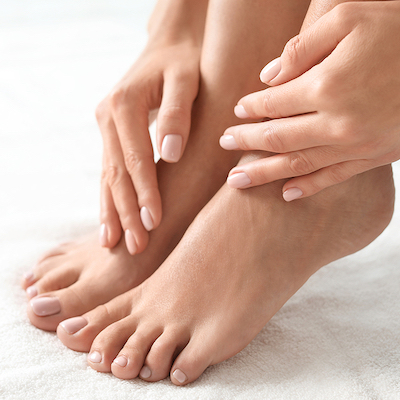Understanding Hammertoe: Symptoms, Causes, and Treatments
Are you experiencing discomfort in your toes? Have you noticed that one or two of your toes are curved out of position? You may be suffering from hammertoe – a common toe deformity that usually affects the second, third, and fourth toes. Hammertoe is caused by an imbalance in muscle and tendon movement, which often occurs due to certain lifestyle choices. In this blog post, we will delve into the symptoms of hammertoe, the underlying causes behind them, and potential medical treatments for those who suffer from it. With guidance on what to look for and how best to seek medical assistance if needed, we hope to provide readers with an understanding of Hammertoe so they can make informed decisions about their own health.
What is Hammertoe and How to Recognize It
Hammertoe is a condition that causes one or more of the toe joints to become stuck in a bent position. This condition is most commonly found in the second toe and can result in pain, corns, and calluses. If left untreated, hammertoe can lead to difficulty walking and even require surgery. Recognizing hammertoe early on is important for early intervention and treatment. Symptoms to look out for include toe deformity, pain or discomfort when wearing shoes, and limited range of motion in the affected toe. If you suspect that you may have a hammertoe, it’s important to seek medical attention from a podiatrist as soon as possible to prevent the condition from progressing.
Common Symptoms of Hammertoe
Hammertoe, a foot condition where the toe joint becomes permanently bent, is a common issue that affects many people. While the exact causes of hammertoe may vary, there are some common symptoms to watch out for. One of the most noticeable symptoms is the toe’s abnormal shape, which may resemble a hammer. Other common symptoms include pain, swelling, and redness around the affected toe, making it difficult to wear shoes comfortably. If you are experiencing any of these symptoms, it is important to seek medical attention to prevent the condition from worsening. With proper treatment and care, individuals can manage their hammertoe symptoms and live a comfortable, pain-free life.

Hammertoe Treatment
Potential Causes of Hammertoe
Hammertoe is a condition that affects the toes, causing them to bend unnaturally. It can cause pain and discomfort and may even impact one’s ability to walk. There are several potential causes of hammertoe, including genetics, wearing ill-fitting shoes, and certain medical conditions such as arthritis or diabetes. Additionally, activities that require repetitive movements of the toes, such as ballet, can also contribute to the development of the hammertoe. It’s important to seek medical attention if you’re experiencing any symptoms as early intervention can be key in preventing further damage.
Non-surgical Treatment Options for Hammertoe
Hammertoe, a condition that causes the bending of one or more toes, often causes discomfort and can make wearing shoes difficult. While surgery may be necessary in severe cases, there are non-surgical treatment options that can alleviate symptoms. These include wearing properly fitting shoes with a roomy toe box, using custom-made inserts or orthotics, and performing regular toe-stretching exercises. Additionally, over-the-counter pain medications can be used to manage pain associated with hammertoe. It’s important to consult with a healthcare professional to determine which treatment option is best suited for each individual’s specific needs.
Surgical Treatments for Severe Cases of Hammertoe
Hammertoe is a common foot condition that affects the second, third, or fourth toes. It occurs when the toe becomes bent at the middle joint, resembling a hammer. In severe cases, this condition can significantly impact an individual’s daily life, causing pain, discomfort, and difficulty when walking or wearing shoes. Fortunately, there are several surgical treatments available for severe cases, including arthroplasty, fusion, and phalangeal head resection. These procedures can help correct the deformity, relieve pain, and improve overall foot function. While surgery is not always necessary for mild cases of hammertoe, it’s important to seek medical attention if the condition worsens or starts to interfere with daily activities. A podiatrist can evaluate the severity of the condition and recommend the appropriate treatment plan.
To sum up, hammertoe is an often painful deformity of the toes that can be caused by a number of factors including genetics, trauma, and improper footwear. If you think you may be developing hammertoe, it is important to seek medical attention. There are both non-surgical and surgical treatments for those with the condition. Non-surgical treatment will usually focus on orthotics or splinting to restore the affected joint and alleviate symptoms. As always consult your doctor if you have any questions about your feet’ health.

Hammertoe
Flagstaff Foot Doctors: Anthony Rosales DPM
https://www.google.com/maps?cid=8835841318590452161
421 N Humphreys St, Flagstaff, AZ 86001, United States
(928) 774-4825
https://flagstafffootandankle.com/
